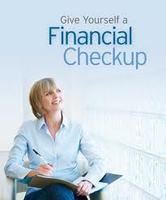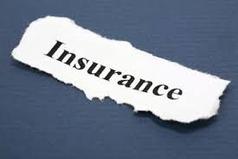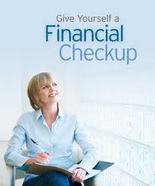Because May 29 is the National 529 College Savings Day, on this day, you can find promotions for waived fees for state 529-plan enrollment.
You can find a state-by-state list of offers at CollegeSavings.org.
|
If you are planning to open a 529 plan account, wait till May 29.
Because May 29 is the National 529 College Savings Day, on this day, you can find promotions for waived fees for state 529-plan enrollment. You can find a state-by-state list of offers at CollegeSavings.org.
0 Comments
In our last blog post, we showed how high and low inflation impact different investment assets' performances.
What does this mean to your investment portfolio? The 60/40 Portfolio The 60 stocks/40 bonds portfolio is common for many investors. We have seen the inflation-adjusted performance of the 60/40 portfolio was devastated during periods of high inflation - dropping to a median net return of 2.67% from a median gross return of 9.46%. During the more favorable periods of low inflation, the 60/40 portfolio showed a much smaller difference between gross and net performance, with an 11.86% gross return vs. a 9.37% net return. Why the 60/40 portfolio is highly vulnerable to inflation? Because its 40% allocation to bonds, which suffer in periods of high inflation. The inflation-adjusted performance of the seven-asset portfolio shows more downside protection in times of high inflation, largely because of the inclusion of commodities: Its median gross return of 13.68% in high inflation periods fell to a more manageable 6.66% when adjusted for inflation. The past 20-plus years have provided generally favorable conditions for a 60/40 portfolio. Interest rates have been in decline since 1982 — witness the 6.4% average annualized return for U.S. bonds since 1991 — and inflation has averaged 2.5% since 1991. Both of these factors provided a tailwind for bonds. The Multi-asset Portfolio Yet should inflation and interest rates both begin to rise, U.S. bonds will face a stiff headwind. The venerable, but underdiversified, 60/40 portfolio is not positioned to thrive during such conditions. It will be vitally important to build multi-asset portfolios that include diverse ingredients that are more resilient to the headwind of rising rates and inflation — such as commodities and real estate. Q. Does inflation affect investment? If yes, how? A. Yes, inflation has a significant impact on investment. The extent of impact varies with different investment products. A recent study provides some of the insights. Since 1970, the median annual inflation rate has been 3.37% (measured by CPI). In order to understand how high and low inflation impact investments, the 44 years were divided into two groups, the 22 years with higher than 3.37% inflation and the other half with less than 3.37% inflation. The chart below shows the Gross Returns and Net Returns (gross return minus inflation rate) of the different investment assets' performances. The Commodities
The inflation-adjusted net performance of commodities was 18.31% during periods of high inflation — surprisingly close to the asset class’ 24.66% gross performance during periods of high inflation. The Stocks Among other asset classes, inflation-adjusted performance varied. The net performance of large- and small-cap U.S. stock is impressive when inflation is low (green bars) but dramatically lower in years when inflation was high (blue bars). The Bonds The net returns of U.S. bonds also suffered greatly when inflation was high. Notice that when inflation was high, U.S. bonds had gross returns of 7.4% but inflation-adjusted returns of only 2.18%. The real-world (net) performance of U.S. bonds obviously favors periods of low inflation and is hurt during periods of high inflation. The Real Estate The inflation-adjusted performance of real estate is also better during periods of low inflation, whereas gross returns were basically the same during high and low inflation. What does this mean to an investor's portfolio performance? Please read our next blog post.  Q. Is there an easy and comprehensive way to do a risk assessment so I can determine the appropriate components for my investment portfolio? A. There are many factors determine a person's risk tolerance level. We are happy to introduce the following easy and free online risk assessment tool, so any investor can run it based on your own situation and decide your risk tolerance. Once you figured out your risk tolerance, the next step is to:
a. Determine the appropriate asset allocation percentages, and b. Coonstruct an appropriate risk-based investment portfolio.  Q. What's a better alternative to pay day loans? A. For millions of underbanked people who rely on the traditional payday loans, there is a start up that acts as a direct lender and creates a way to use small dollar loans as an opportunity for people to build credit and move up the financial ladder. It's best fit for consumers with poor or no credit. This start up is LendUp. Give it a try if you are looking for small amount short term loans.  Q. Are no commission ETFs the best? A. Not always true. Some ETFs are offered with commission-free trades, but they are not always the best. For example, if they have wide bid/ask spreads, any saved trade fee will be wiped out with the higher buying price. The key is to select ETFs that is aligned with your long term investment goals.  Q. Are ETFs more tax efficient? A. Not always true. ETFs that hold futures contracts will issue a K-1 tax form instead of 1099, which can be a hassle to deal with in tax filing time. Some ETFs, for example, SPDR Gold Shares (GLD) and iShares Silver Trust (SLV), are taxed as collectibles, which means capital gains are taxed at a maximum 28% rather than the ordinary 15%. Actively managed ETFs with high turnovers could also create unexpected capital gain distributions. How to deal with the not tax friendly ETFs? Trade them in your tax-deferred accounts.  Q. Are ETFs less volatile than stocks? A. This is a common myth, because each ETF always include many stocks in it, people tend to think ETF's are more diversified and less volatile than stocks. Wrong. It depends on what kind of ETFs you are looking at. Some sector ETFs are very volatile, for example, Market Vectors Brazil Small Cap ETF (BRF), Market Vectors Gold Miners (GDX), or iShares Nasdaq Biotechnology ETF (IBB). While some stocks are quite stable, for example, Johnson & Johnson (JNJ). If you want to compare volatility, make sure it's an apples to apples comparison.  Q. Is it true that an ETF's liquidity is not important as its underlying stocks? A. Wrong. Many ETFs are thinly traded, this means their bid and ask spreads are wide, unfortunately the wider the spread, the bigger a loss an investor will suffer from buying the ETF. A wide bid/ask spread of an ETF indicates the inability to arbitrage the price of the ETF to its underlying net asset value (NAV). Why? Because ETFs' shares are created and redeemed through in-kind exchanges to prevent ETFs from trading at a discount or premium to their NAV. Market Makers typically create and redeem ETFs in blocks of 50,000 shares, for thinly traded ETF's, this indicates a problem. What to do if the ETF you want to buy has wide bid/ask spread? Use limited orders, just like you do with stocks, by specifying the price point you want to pay for.  Q. How do I know the amount of 401K balance will be at my retirement time? A. If you keep on contributing to your 401k (or 401b or 457 accounts), with company matches and after age 50 step up contributions, your 401k balance could be a sizable amount at your retirement time. The following calculator gives you the precise amount. The key inputs are the following:
Just enter the key inputs needed to the yellow area, and you will find out how much pre-tax 401K account balance will be!  Q. Should I invest in target-date retirement funds? A. If you don't know how to invest your 401k money, then target-date retirement funds could be a solution. What is a Target-date Retirement Fund A target-date retirement fund balances risk with the number of years until your retirement time. It has diversified asset mix and the mix changes over time, from a more aggressive investment mix for younger investors, to a more conservative mix for older investors. If you select the target-date retirement fund route, it's best to invest your entire 401(k) savings in a single fund because otherwise the money not in the target-date funds will skew your portfolio allocation making it not optimal for your target retirement time. Which Target-date Fund is right for you? You can choose a fund-based on your year of birth and expected retirement date. The funds are named for expected retirement years in five-year increments. For example, if you were born in 1986, you might choose to invest in the 2050 Fund, because you will reach age 65 around the year 2050. Worried about messing up the math on your age? Simply choose this link to select your current age, and the tool will suggest a Focus Fund. A Few Creative Ways to use Target-date Funds While the funds are designed so you can invest in just one fund, you have some options …
 We have introduced VPAS and compared it with robo-advisors and human-advisors, now we will take a look at its implication to the financial planning industry and what does it mean to investors. From the broader industry perspective, there are many significant implications to the Vanguard offering. 1. It's possible to get affordable financial advisory services For the vast underserved middle class families, VAPS shows that it is affordable to have both asset management service and live human interaction-based financial planning services. This is very significant, as most of such services are used to be reserved for the rich families only. 2. There is real value in human financial advisors With today's technology advancement, robo-advisor was once viewed as a way to making the high end financial advisory services affordable to ordinary families. But people still value live and real human interactions, especially as your family life encounter some significant changes. There are already hourly based financial advisory services such as the Garrett Planning Network, but combining the advisory service with asset management is real value added for normal people. 3. You might encounter a young financial advisor at Vanguard Vanguard has a vast mutual fund client base already, with VAPS, it will gain instant access to such huge base and create many openings and career paths for young financial advisors. Chances are you will be assigned a young financial advisor to work with, but no worries about their competency as Vanguard could offer the best training for its advisor team given its scale.  Q. How to back date testing my self-constructed portfolio? A. There is a free back date testing program out there - EZbacktest. It imports data from Yahoo Finance and allows you to create any portfolio of your own and back date testing it against S&P500 index. It's worth a try, if you find it worth your while, please donate to it so the author could keep adding new features to it.  We have introduced VPAS and compared it with robo-advisors, now we will compare VPAS with human advisors. Human Financial Advisors Real human financial advisors provide many financial planning related services, such as asset accumulation / decumulation planning, portfolio construction and rebalancing, tax planning, estate planning, insurance needs review and solutions, cash flow and budgeting, etc. In short, human financial advisors use their financial planning knowledge to provide comprehensive financial planning service. VPAS as a Threat to Human Advisors With its access to human financial planners at a “robo-advisor price point”, VPAS is a threat for the human advisor business, especially the ones who charge high fees for similar portfolio management and financial planning services, such as Personal Capital. However, it should be noted, the scope of VPAS is not broad enough to cover all aspects of financial planning services, this leaves room for human advisors to compete in many niche areas of financial planning. The Bottom Line VPAS set a pricing reference point for the financial advisor services that consumers could use when they search the right advisors. Human financial advisors need to demonstrate real value added in order to justify higher fees. For complicated financial matters, consumers are probably still better off to talk to an expert in the specific areas.  Q. I am applying a Term life insurance from Banner, does it discriminate applicants with H1B visa? A. Banner (or William Penn of NY) is one of the few top Term life insurers that does not discriminate applicants based on visa status, assuming the applicant meets the following conditions:
If you meet the above conditions and medical exam indicates excellent health conditions, you should expect the best underwriting class from Banner! If you have any question or want to compare offers with other insurers, please let us know, we guarantee you the best Term rate anywhere in the U.S.  We have fully introduced VPAS, now we will compare VPAS with Robo-advisors. Who are robo-advisors? Robo-advisors refers to algorithm-based automated investment services with investors not having access to a human advisor. Good examples include Wealthfront (0.25% AUM fee) and Betterment (0.15% AUM fee), both of which provide no human advisors, or Personal Capital (0.95% AUM fee with minimum $100,000 account value), which is a technology-driven platform for human financial advisors engaged virtually with investors. With a flat 0.3% AUM fee, VPAS is barely above the true robo-advisors' fees, but offering real human advisor interactions, which even at Personal Capital, are priced much higher. Are Robo-advisors doomed? Not necessarily, it just means more competition and those robo-advisors need to offer differentiated services to attract customers. For example -
 Q. What is an alternative investment and should I embrace it? A. Alternative investment is a buzzword in the investment world lately. For different people, it could mean different things. For most people, an alternative investment means something other than stocks, bonds or cash. In other words, something that is exotic, such as real estate, gold, previous metals or other commodities. The Investment Company Institute (the trade association for the fund industry) defines a domestic equity alternative strategy fund as a fund that seeks "to provide capital appreciation while minimizing risk while employing long/short, market-neutral, leveraged or inverse strategies". The reality is, an alternative investment could be simply something that you are not having right now. For example, if you currently put all your money in a cash account, an alternative investment could be stocks or bonds. Whatever you do, just remember this basic investment principle - invest in a diversified and low cost portfolio, regardless how it is called.  In last blog post, we introduced VPAS, now we drill down to its details. Questionnaires VPAS starts with an electronic questionnaire that covers your personal details, salary and tax information, financial account details (with Vanguard account information auto-populated) and a risk tolerance questionnaire, along with your current savings towards retirement, anticipated Social Security and pension benefits, and your retirement spending goals. Once data is entered, you will see a calendar to schedule a time for a 45-minute plan presentation (and receive a draft of the plan in advance to review). The Recommended Plan The plan includes the following items:
The Recommended Portfolios The plan recommends two portfolios:
The funds chosen for the recommended portfolios typically include broadly diversified Vanguard index funds, such as: Total Stock, Total International, Total Bond, and Total International Bond.  Q. I have heard the term "umbrella insurance", but how do I know if I need it or not? A. The Umbrella Insurance is also known as Personal Liability Policy, it acts like an umbrella: sits over your auto and homeowner's, renter's and/or condo insurance policies to provide an extra layer of protection. Coverage from your homeowner's, auto policies will pay for damage, but if a claim exceeds the limits of those policies, you could be held responsible for any amount that is not covered. With an Umbrella Insurance, the insurance company will step in the process and you can bet they will scrutinize any excessive claims. The best of all, an Umbrella Insurance is inexpensive. Average policy costs $150 to $300 for the first million dollars in coverage, and an additional $75 for every million dollars in coverage after that. Remember, a small lawsuit could potentially wipe out your lifetime savings, a small investment in an Umbrella Insurance offers you a big protection.  In this blog post, we will give a high level introduction of VPAS. VPAS offers a managed portfolio of (Vanguard) funds and ETFs, this is nothing special, but its inclusion of a FREE access to someone with a CFP certification is unique. VPAS includes an upfront financial plan, ongoing updates whenever needed as your life changes, access to a CFP advisor via email, a phone call, or a video conference, plus an annual review. It's pricing is revolutionizing the financial advisory industry. Unlike the tyical 1% AUM fee, VPAS' cost is a flat 0.3% AUM fee, with a minimum $100,000 account balance to start with (a change from Vanguard' existing Vanguard Asset Management Services offering which has a $500,000 minimum and a 0.7% fee). There are indications that VPAS may even drop the minimum to $50,000 and advertise publicly soon.  Q. I am looking for affordable (or even free) financial advisor service to help plan my investment, is it even possible? A. Financial Planning service is usually reserved for affluent families, it's usually charged an annual fee based on assets under management, or an hourly rate that intimates many families. Not anymore! The truly low cost next generation financial planning service is finally upon us, with the introduction of Vanguard Personal Advisor Service (VPAS). Still not publicly advertised, we will use several blog posts to introduce and analyze VPAS -
 Q. Why should I maximize 401K contribution? A. It's Okay to ask this question as there are many disadvantages of investing in 401K: 1. There is RMD requirement for 401K 2. You will pay income tax on the gain in the end 3. Your 401K fund choices are very limited 4. All available 401K funds have high expenses 5. It's not flexible, especially when you need money Given these many disadvantages, you might wonder - why not simply investing in a low cost index fund and buy-and-hold till the retirement time? In the end, you will pay only long-term capital gain which probably will be lower than your ordinary income tax rate at your retirement time, especially you will probably have high retirement income. However, there is a major advantage of 401K that no other investment options have: you pay no income tax upfront, and to a lesser extent another benefit - your investment gains have no tax until at time of distribution (if you buy-and-hold outside 401K, you also pay no tax, except dividend gains that your funds distribute which is outside of your control). You can use the following calculator to evaluate whether investing in 401K or not, just plug in your own numbers into the areas highlighted in yellow. The chart shows the end of period after-tax balance under the two options.  Q. IRA is the best retirement plan for what type of person? A. IRA is the best retirement plan for the following types of people:
 Q. I am confused by the different ways to save for retirement - Roth IRA, Traditional IRA and Roth 401K. What are the differences between them? A. Please see below a quick and dirty comparisons between Roth 401K, Roth IRA, and Traditional 401K.
 Q. How to understand the various financial planners' designations? A. There are dozens of professional designations that financial planners put behind their names - CFP, ChFC, CLU, CFA, CPA, EA, CFS, CMFC, PFS, ... to name a few. Some of these designations are important and significant, while others are insignificant or simply made up. Which are the important designations? CFP (Certified Financial Planner) This designation means that the financial planner has taken an extensive course of education, has passed exams, and has worked in the industry at least 3 years. CPA (Certified Public Accountant) A CPA has a financial background, has passed a grueling examination, and has at least 2 years of public accounting experience. CFA (Chartered Financial Analyst) This is another prestigious designation that requires training, testing, and licensing. CFAs must undergo rigorous training in portfolio management, securities analysis, and economics, among other things. CLU and ChFC These designations are typically given to people who have taken financial training concentrated on insurance issues. What about the rest of designations? They really don't matter much to you, as a client. |
AuthorPFwise's goal is to help ordinary people make wise personal finance decisions. Archives
September 2022
Categories
All
|
